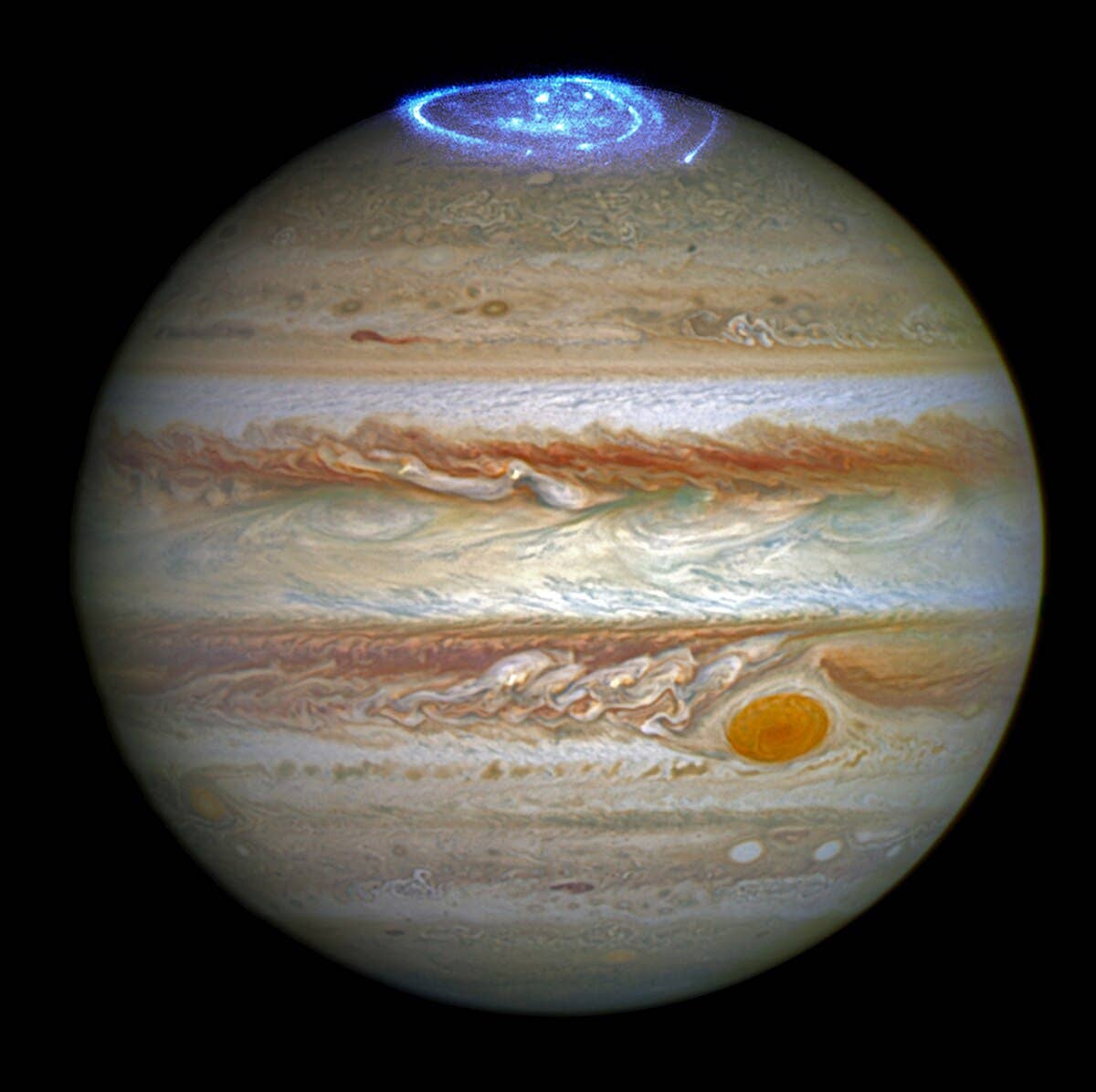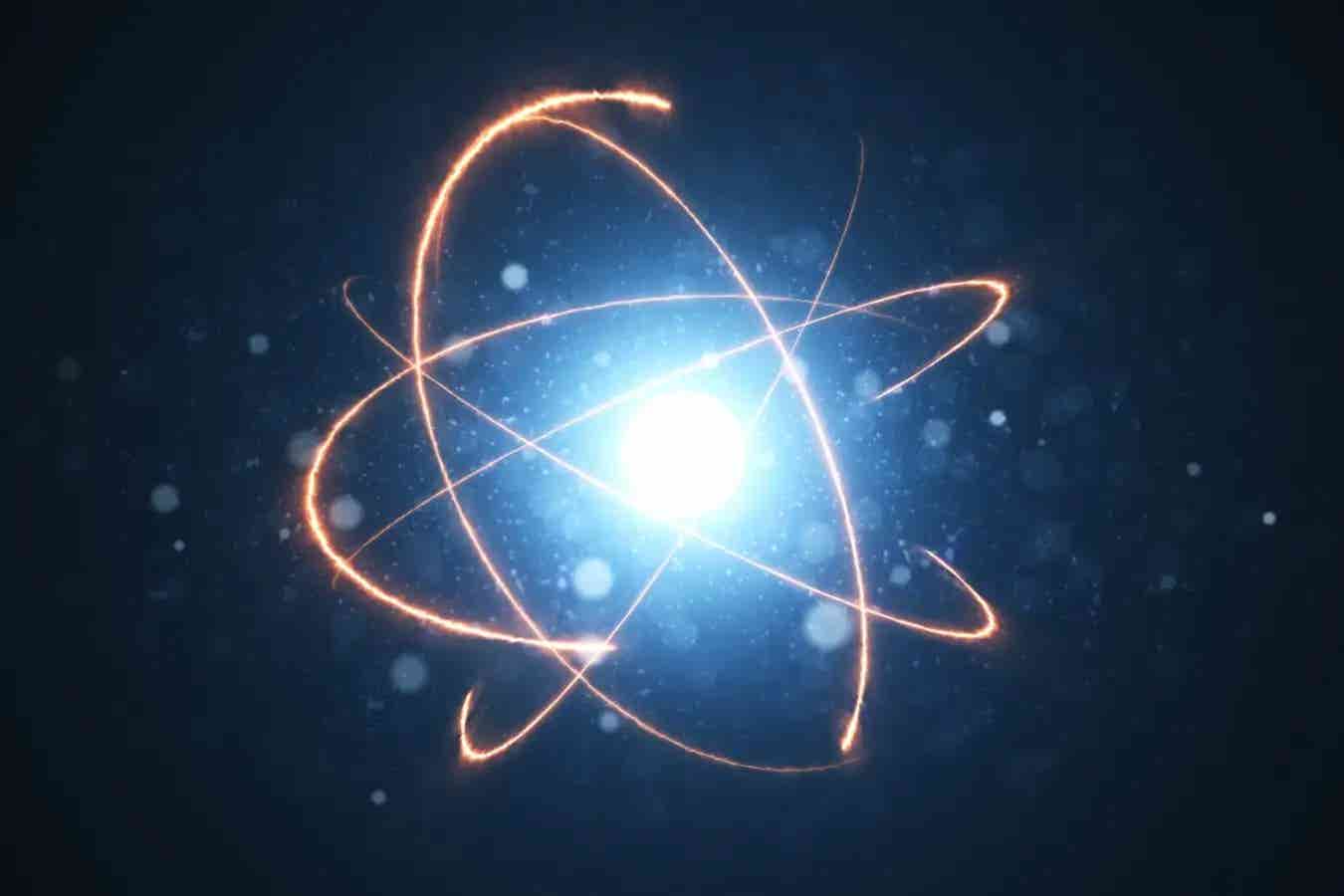Awe-inspiring first: Astronomers capture Jupiter’s response to a massive solar wind strike
A sudden blast of solar wind caused a massive heat wave on Jupiter, revealing how deeply the Sun can influence giant planets.

Jupiter’s atmosphere heats globally after solar wind slam, changing how scientists see giant planets. (CREDIT: NASA, ESA, and J. Nichols (University of Leicester))
Jupiter’s skies can glow with lights more intense than anything on Earth. Its polar auroras shine when charged particles crash into its upper atmosphere, creating bursts of heat and energy. These events, while far from Earth, may hold clues about how the Sun affects not just giant gas planets, but also your own planet’s power grids, satellites, and GPS systems.
A recent study reveals a surprising connection between the Sun’s activity and Jupiter’s enormous upper atmosphere. Scientists found that bursts of solar wind—streams of charged particles from the Sun—can slam into Jupiter, squeeze its magnetic bubble, and unleash planet-wide waves of heat. Until now, these effects were thought to be limited to the poles. But new evidence shows the Sun’s power reaches much farther.
A bubble of gas and heat
High above Jupiter’s swirling clouds, its upper atmosphere stretches hundreds of kilometers into space. This layer includes two parts: a thermosphere made of neutral hydrogen gas, and an ionosphere filled with charged particles like electrons and ions. Both of these parts respond to energy from the planet’s magnetosphere and the Sun.
Some of this energy comes from Io, a volcanic moon that spews gas into space. As this gas escapes and becomes charged by sunlight, it fills Jupiter’s magnetic field with plasma. The planet spins once every 9 hours and 56 minutes, whipping its magnetosphere along with it. This rapid spin creates electric currents between the magnetosphere and the ionosphere. These currents help form the planet’s famous auroras.
At the poles, the auroras heat the upper atmosphere to more than 900 K (about 627°C). Elsewhere, upper atmospheric temperatures hover around 700 K (427°C). But if sunlight alone were responsible for heating the planet, temperatures would be far lower—just 200 K. That’s a huge 500 K gap scientists have been trying to explain for decades.
Theories of heat: waves and winds
To solve this mystery, researchers proposed two main ideas. One was that waves from deep in the planet—gravity and acoustic waves—might travel upward and carry heat. The other was that the hot gases from the poles might spread across the planet.
Related Stories
Gravity waves were found to change temperatures by only a few dozen degrees, while acoustic waves could raise them by several hundred. In 2016, a hot spot above Jupiter’s Great Red Spot reached over 1,600 K. Scientists thought it was from acoustic heating. But later studies didn’t find similar hot spots there, raising doubts.
Instead, attention turned back to the idea of global circulation. One model showed how heat from the poles might drift toward the equator. Observations suggested auroral temperatures dropped faster than could be explained by radiation alone. That hinted heat was being moved around. But other models showed strong winds caused by the planet’s fast rotation would trap the heat near the poles, making wide-scale movement unlikely.
Then came a new clue.
A giant wave of heat
In 2017, scientists using the Keck telescope made detailed maps of Jupiter’s upper atmosphere. They found something unexpected: a massive warm zone far from the poles. This zone stretched across 160 degrees of longitude—nearly half the planet—and reached temperatures of 950 K. That was 200 K hotter than the surrounding areas.
No known process could create such heat outside of the auroral zones. So, researchers believed this feature had been launched from the poles and drifted toward the equator.
Doppler measurements showed winds in the auroral regions moved at hundreds of meters per second. The warm region appeared to be drifting away from the auroral oval at a speed of 620 meters per second. But that first estimate only looked at changes in latitude, not at any shifts in longitude. It was a start, but far from a complete picture.
So what caused this heat surge? A strong candidate was a blast of solar wind.
Sun strikes Jupiter
At the same time the Keck telescope observed Jupiter’s heat wave, data from NASA’s Juno spacecraft revealed something remarkable. The planet’s magnetic field, which usually stretches far into space, had been sharply compressed. Scientists at the University of Reading believe this was caused by a solar wind surge—an extra dense and fast stream of particles from the Sun.
Dr. James O’Donoghue, lead author of the new study, published in the journal Geophysical Research Letters, explained the finding: “We have never captured Jupiter's response to solar wind before – and the way it changed the planet’s atmosphere was very unexpected. This is the first time we’ve ever seen a thing like this on any outer world.”
The solar wind squeezed Jupiter’s magnetic field like a squash ball. This forced more energy into the poles, which heated the upper atmosphere and caused it to expand. The pressure created strong winds that pushed hot gases toward the equator.
Because Jupiter is 11 times wider than Earth, this hot region covered a massive area. Temperatures soared past 500°C, much higher than the usual 350°C background.
Dr. O’Donoghue added, “Jupiter acts like a laboratory, allowing us to study how the Sun affects planets in general. By watching what happens there, we can better predict and understand the effects of solar storms which might disrupt GPS, communications, and power grids on Earth."
Unraveling global winds
The new study took things further. By combining Juno data, Keck telescope maps, and solar wind models, scientists traced how heat moved across Jupiter’s atmosphere. The arrival of the solar wind was estimated using updated models. This gave a clearer picture of when the energy surge hit and how fast the atmosphere responded.
For the first time, velocity measurements were taken across all longitudes, not just in a single direction. This showed how the heat feature traveled, helping estimate its launch time. The data also confirmed that such solar wind hits may occur as often as two or three times a month.
Professor Mathew Owens, another researcher from the University of Reading, said, “Our solar wind model correctly predicted when Jupiter's atmosphere would be disturbed. This helps us further understand the accuracy of our forecasting systems, which is essential for protecting Earth from dangerous space weather."
These findings shake up what scientists thought they knew about giant planets. Until now, it was believed that their size and fast spin made them less likely to be changed by the Sun. But Jupiter’s response shows that even planets far from the Sun can be deeply affected by solar storms.
Why it matters
Earth’s magnetic field also faces solar wind storms. These can damage satellites, interrupt GPS signals, and even knock out power systems. By watching what happens on Jupiter, researchers can improve their predictions for how such storms might affect Earth.
Even though Jupiter is more than 700 million kilometers away, it serves as a giant lab for space weather. Each time solar wind hits, it reveals more about how planets react, how heat moves through atmospheres, and how energy from space changes the worlds in our solar system.
With more missions like Juno and powerful telescopes like Keck, scientists are getting better at tracking these massive energy shifts. And thanks to this study, we now know Jupiter’s upper atmosphere is far more dynamic—and vulnerable—than we once believed.
Note: The article above provided above by The Brighter Side of News.
Like these kind of feel good stories? Get The Brighter Side of News' newsletter.
Joshua Shavit
Science & Technology Writer | AI and Robotics Reporter
Joshua Shavit is a Los Angeles-based science and technology writer with a passion for exploring the breakthroughs shaping the future. As a contributor to The Brighter Side of News, he focuses on positive and transformative advancements in AI, technology, physics, engineering, robotics and space science. Joshua is currently working towards a Bachelor of Science in Business Administration at the University of California, Berkeley. He combines his academic background with a talent for storytelling, making complex scientific discoveries engaging and accessible. His work highlights the innovators behind the ideas, bringing readers closer to the people driving progress.



